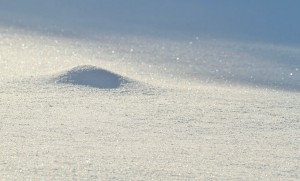Very few students have the advanced skills that could lead to careers in science and technology, according to results of a national exam released Tuesday that are alarming educators nationwide. Only 1 percent of fourth-grade and 12th-grade students, and 2 percent of eighth-graders scored in the highest group on the 2009 National Assessment of Educational Progress, a federal test known as the Nation’s Report Card. Less than half were considered proficient, with many more showing minimal science knowledge.
“It’s very disappointing for all educators to see students performing below the level we’d like them to be,” said Bonnie Embry, an elementary school science lab teacher in Lexington, Ky. “These low scores should send a message to educators across our nation that we’re not spending enough time teaching science.” U.S. Education Secretary Arne Duncan said the results mean students aren’t learning at a rate that will maintain the nation’s role as an international leader in the sciences. He and others expressed concern that more students aren’t prepared for careers as inventors, doctors and engineers in a world increasingly driven by technology. “Our ability to create the next generation of U.S. leaders in science and technology is seriously in danger,” said Alan Friedman, former director of the New York Hall of Science, and a member of the board that oversees the test.
The exam tests knowledge and understanding of physical, life, Earth and space sciences. Examples of skills students need to demonstrate to perform at the advanced level include: designing an investigation to compare types of bird food in fourth grade; predicting the sun’s position in the sky in eighth grade; and recognizing a nuclear fission reaction for those in 12th grade.
Overall, 34 percent of fourth-graders, 30 percent of eighth-graders and 21 percent of 12th-graders scored at the proficient level or above. Seventy-two percent of fourth-graders, 63 percent of eighth-graders and 60 percent of 12th-graders showed a basic level or above of science knowledge and skills.
The results also indicated there are significant differences between states. North Carolina had scores that were lower than the national average at fourth grade and at eighth grade. The achievement gap was also more notable in certain student groups. In 2009, male students in fourth grade had an average score that was higher than females.
The test was given to more than 150,000 students in both fourth and eighth grade, and a nationally representative sample of 11,100 high school seniors. The last time it was given was in 2005, but the test was significantly updated in 2009, making a comparison between years unreliable. The 2009 exam tested students more on how well they understand and know how to apply scientific knowledge, rather than memorization of scientific terms and formulas. While there are too many differences between the 2005 and 2009 exams to make a comparison, the overall trend is one of stagnation. The Programme for International Student Assessment, a key international assessment, shows U.S. students trailing many other nations in science.
Get the full story now! You can find out what each state scored and more details by clicking the link below.
http://nces.ed.gov/nationsreportcard/


